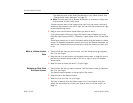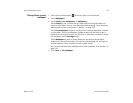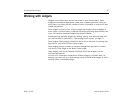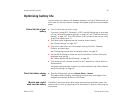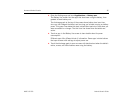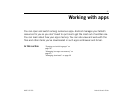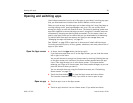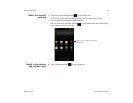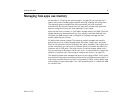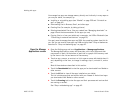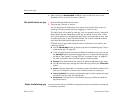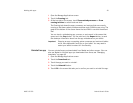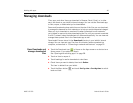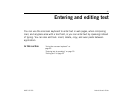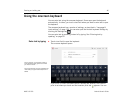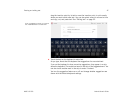
Working with apps 40
AUG-3.0-100 Android User’s Guide
Managing how apps use memory
As described in “Opening and switching apps” on page 38, you typically don’t
need to worry about managing apps beyond installing, opening, and using them.
The operating system manages how they use memory and other resources
automatically. But there are times when you may want to know more about how
apps are using the memory and other resources in your tablet.
Apps use two kinds of memory in your tablet: storage memory and RAM. Apps use
storage memory for themselves and any files, settings, and other data they use.
They also use RAM (memory that is designed for temporary storage and fast
access) when they are running.
All tablets have internal storage. The operating system manages and carefully
guards the portion of internal storage where the system image, apps, and some
kinds of files and other data for those apps are stored, because it can contain your
private information; you can’t view its contents when you connect the tablet to a
computer with a USB cable. The other portion of internal storage, where music,
files you download in Browser or Gmail, and so on, is visible when you connect the
tablet to a computer (see “Connecting to networks and devices” on page 55).
The operating system also manages how apps use your tablet’s RAM. It only allows
apps and their component processes and services to use RAM when they need it. It
may cache processes that you’ve been using recently in RAM, so they restart more
quickly when you open them again, but it will erase the cache if it needs the RAM
for new activities.



